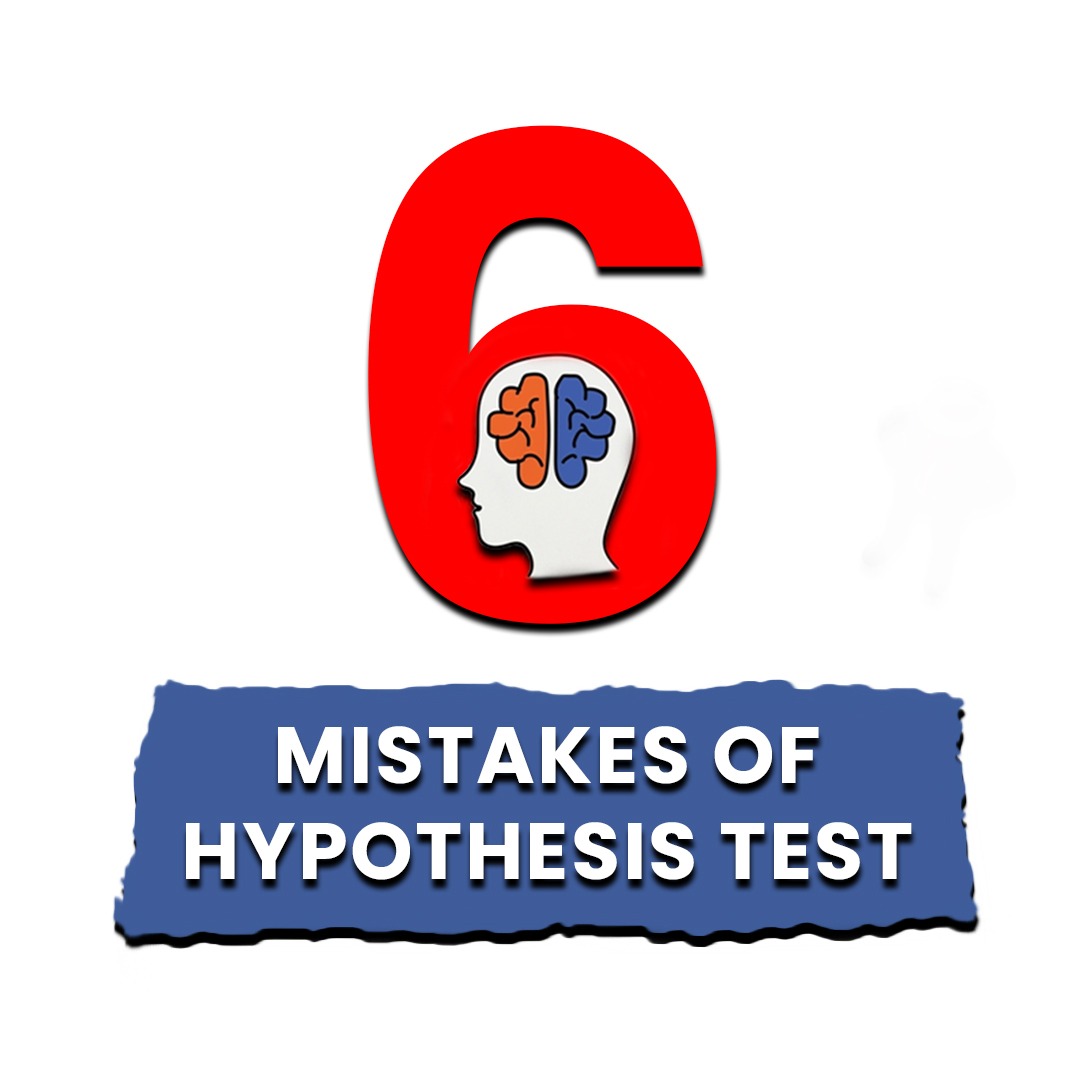
Blogs

6 mistakes of Hypothesis Test
Hypothesis testing is a statistical method that uses sample data to make inferences about population parameters. It is a crucial component of Six Sigma and sets it apart from other methodologies.
There are four steps involved in conducting hypothesis tests.
A. Select the appropriate Hypothesis Test (Null and Alternative)
B. Select the right Hypothesis tests
C. Conduct the Hypothesis test.
D. Infer results
However, it's easy to make mistakes if the process is not conducted carefully. Here are some commonly made mistakes while performing hypothesis testing:
1. Not Clearly Stating the Null and Alternative Hypotheses:
One of the most fundamental errors is not clearly stating the null hypothesis (H0) and the alternative hypothesis (Ha). Most of the alternative hypothesis tests must be one-tail tests, meaning alternative hypothesis should have < or > symbols to compare, but we often see "not equal to" symbols to compare samples. P value, which depends on the alternative hypothesis, will change based on whether it is a one-tail test or two-tail test.
Example: if you would like to compare if the resolution time of team A is better than that of team B, your comparison should be that the mean of team A is less than the mean of team B, but in most of the cases we alternative hypothesis tests
2. Using the Wrong Test:
Choosing the wrong statistical test for the data at hand is a common mistake. It's essential to understand the type of data (e.g., continuous, normal)
The most common are.
- Use of T-tests when data is not normal; test for normality is not done.
- Not using the F method in the 2-variance test when the data is normally distributed.
3. Incorrect Assumptions:
Many hypothesis tests have underlying assumptions that must be met for the results to be valid. Ignoring or not verifying these assumptions can lead to incorrect conclusions. Common assumptions include normality of data, homogeneity of variances, and independence of observations.
- ANOVA and Regression assume that data comes from a normal distribution. Still, the normality test is usually not done.
- Data is not checked for outliers, and outliers are not removed from the dataset before most of the hypothesis tests, whereas most of the hypothesis tests have an assumption that data does not have outliers.
4. Misinterpreting P-values:
Misinterpreting P-values is a prevalent mistake in hypothesis testing. A p-value represents the probability of accepting a null hypothesis. It might look silly, but many times, the inferences are exactly the opposite.
5. Wrong Sample Sizes:
Small sample sizes can result in low statistical power, making it difficult to detect true effects. Additionally, small samples may not adequately represent the population, leading to biased or unreliable results. We often see sampling as biased, leading to incorrect results.
6. Ignoring Type Errors:
While much emphasis is placed on avoiding Type I errors (false positives), it's also essential to consider Type II errors (false negatives). The moment the P value is close to the significance value (generally 0.05), one must consider the chance of Type I or Type II errors.
By being aware of these common mistakes and taking steps to avoid them, researchers can improve the validity and reliability of their hypothesis testing results. It's essential to approach hypothesis testing with caution, attention to detail, and a thorough understanding of statistical principles. If you have any queries about Lean Six Sigma, please write to me at info@xergy.co.in. To learn more about Hypothesis Testing, join our upcoming webinar on 21st April @ 10:15 A.M.
